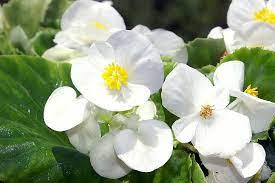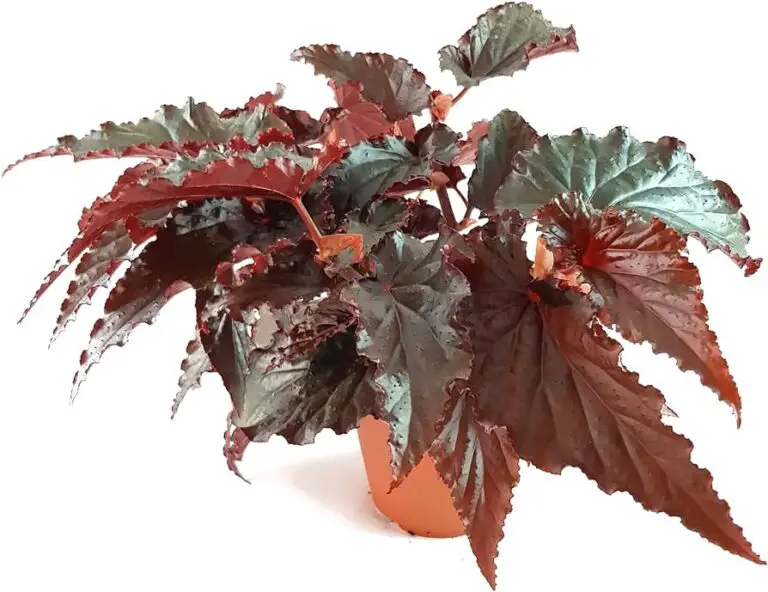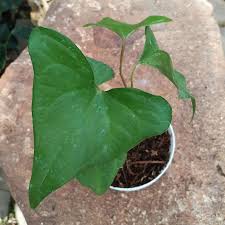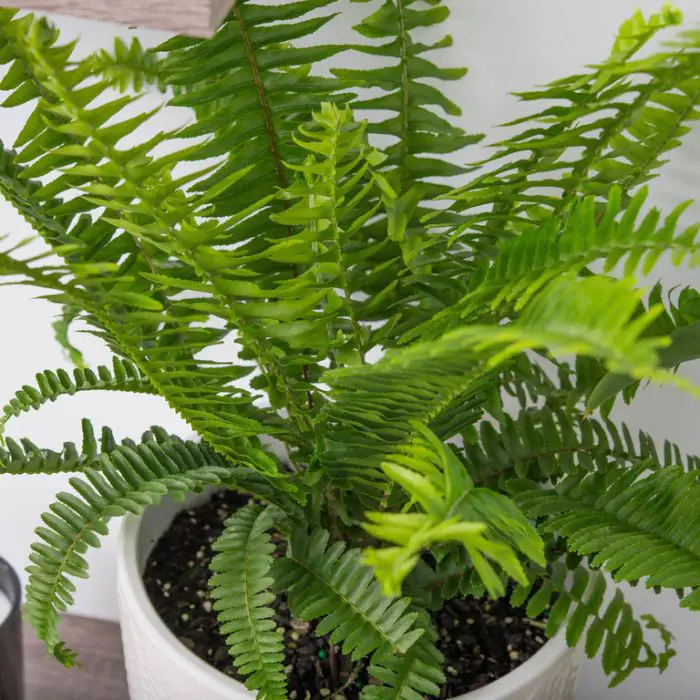Introduction
The variegated fiddle leaf fig (Ficus lyrata ‘Variegata’) is a stunning houseplant that is known for its large, violin-shaped leaves with variegated patterns of white, cream, and green. Variegation is a cell mutation that causes plants to produce less chlorophyll, the chemical that makes plants appear green. This mutation results in the beautiful coloring that makes variegated plants so sought-after, but it also reduces a plant’s ability to convert energy into sunlight.
Overview about Variegated Fiddle Leaf Fig
| Characteristic | Variegated Fiddle Leaf Fig |
|---|---|
| Scientific name | Ficus lyrata ‘Variegata’ |
| Common name | Variegated Fiddle Leaf Fig |
| Family | Moraceae |
| Origin | West Africa |
| Growth habit | Large, upright shrub or tree |
| Leaves | Large, violin-shaped leaves with variegation in shades of green, yellow, and white |
| Flowers | Insignificant, fig-like flowers |
| Fruit | Small, inedible figs |
| Light | Bright, indirect light |
| Soil | Well-draining potting mix |
| Water | Allow the top half of the soil to dry out between waterings |
| Humidity | Prefers high humidity |
| Fertilizer | Fertilize regularly during the spring and summer with a balanced fertilizer |
| Propagation | Can be propagated from stem cuttings or air layering |
| Toxicity | Mildly toxic to pets if ingested |
Is Fiddle Leaf Fig Indoor or Outdoor?
The fiddle leaf fig is a tropical plant, so it is best grown indoors. It can be grown outdoors in warm climates, but it must be protected from direct sunlight and cold temperatures.
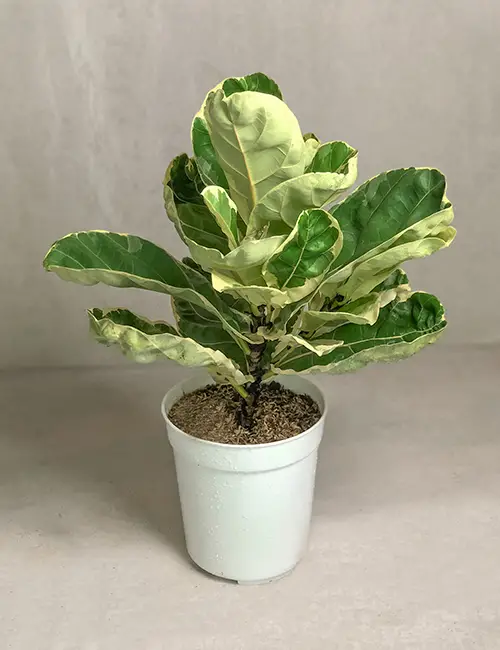
Why are the leaves on my variegated fiddle leaf fig falling off?
There are a few common reasons why variegated fiddle leaf fig leaves fall off:
- Overwatering or underwatering: Fiddle leaf figs are sensitive to watering, so it’s important to get it right. Overwatering can lead to root rot, which can cause leaves to fall off. Underwatering can also cause leaves to fall off, but it’s less common.
- Low light: Variegated fiddle leaf figs need bright, indirect light. If your plant is sitting in too much shade, it will start to drop leaves.
- Pests or diseases: Variegated fiddle leaf figs can be susceptible to pests and diseases, such as spider mites, mealybugs, and scale. If you see any pests on your plant, treat them immediately with an insecticidal soap or neem oil.
- Environmental changes: Fiddle leaf figs don’t like to be moved around, so if you’ve recently moved your plant to a new spot, it may drop some leaves in protest.
8 Plants That Flowers Look Like Birds
Troubleshooting Variegated Fiddle Leaf Fig Problems
If your variegated fiddle leaf fig is losing leaves, there are a few things you can do to troubleshoot the problem:
- Check the plant’s soil moisture. If the soil is too dry or too wet, adjust your watering schedule accordingly.
- Inspect the plant for pests or diseases. If you find any pests or diseases, treat them immediately.
- Fertilize the plant once a month during the spring and summer with a balanced fertilizer.
- Make sure the plant is getting enough light. Fiddle leaf figs need bright, indirect sunlight.
- Avoid moving the plant too often. Fiddle leaf figs are sensitive to changes in their environment.
If you have tried all of the above and your variegated fiddle leaf fig is still losing leaves, it may be best to consult with a plant expert.
Tips for Caring for Your Variegated Fiddle Leaf Fig
Here are a few additional tips for caring for your variegated fiddle leaf fig:
- Mist the plant regularly to increase humidity.
- Place the plant on a pebble tray filled with water to increase humidity.
- Avoid placing the plant near drafts or heating vents.
- Clean the leaves regularly with a damp cloth to remove dust and dirt.
- Repot the plant every two to three years, or when it outgrows its pot.
Conclusion
The variegated fiddle leaf fig is a beautiful and unique plant, but it can be challenging to care for. By following the tips above, you can help your plant thrive and enjoy its stunning foliage for years to come.

